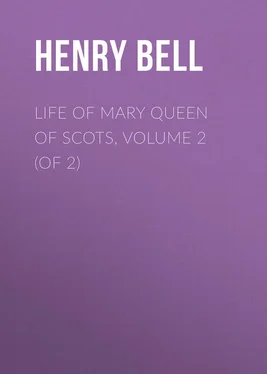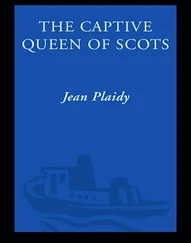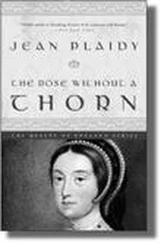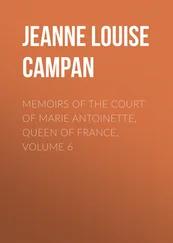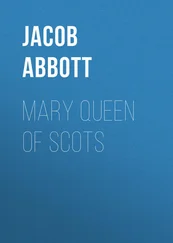Henry Bell - Life of Mary Queen of Scots, Volume 2 (of 2)
Здесь есть возможность читать онлайн «Henry Bell - Life of Mary Queen of Scots, Volume 2 (of 2)» — ознакомительный отрывок электронной книги совершенно бесплатно, а после прочтения отрывка купить полную версию. В некоторых случаях можно слушать аудио, скачать через торрент в формате fb2 и присутствует краткое содержание. Жанр: foreign_antique, foreign_prose, на английском языке. Описание произведения, (предисловие) а так же отзывы посетителей доступны на портале библиотеки ЛибКат.
- Название:Life of Mary Queen of Scots, Volume 2 (of 2)
- Автор:
- Жанр:
- Год:неизвестен
- ISBN:нет данных
- Рейтинг книги:5 / 5. Голосов: 1
-
Избранное:Добавить в избранное
- Отзывы:
-
Ваша оценка:
- 100
- 1
- 2
- 3
- 4
- 5
Life of Mary Queen of Scots, Volume 2 (of 2): краткое содержание, описание и аннотация
Предлагаем к чтению аннотацию, описание, краткое содержание или предисловие (зависит от того, что написал сам автор книги «Life of Mary Queen of Scots, Volume 2 (of 2)»). Если вы не нашли необходимую информацию о книге — напишите в комментариях, мы постараемся отыскать её.
Life of Mary Queen of Scots, Volume 2 (of 2) — читать онлайн ознакомительный отрывок
Ниже представлен текст книги, разбитый по страницам. Система сохранения места последней прочитанной страницы, позволяет с удобством читать онлайн бесплатно книгу «Life of Mary Queen of Scots, Volume 2 (of 2)», без необходимости каждый раз заново искать на чём Вы остановились. Поставьте закладку, и сможете в любой момент перейти на страницу, на которой закончили чтение.
Интервал:
Закладка:
In the midst of these festivities, Mary had various cares to perplex her, and various difficulties to encounter. When she first came to Stirling, she found that Darnley had not chosen to go, as usual, to the Castle, but was residing in a private house. He left it, however, upon the Queen’s arrival, and took up his residence in the Castle with her, – a fact of some consequence, and one which Murray has himself supplied. 9 9 Anderson, vol. ii. p. 271.
But Darnley’s sentiments towards Mary’s ministers, continued unchanged; and it was impossible to prevail upon them to act and associate together, with any degree of harmony, even in presence of the ambassadors. Mary was extremely anxious to prevent her husband from exposing his weakness and waywardness to foreigners; but he was as stubborn as ever; and though he had given up thoughts of going abroad, it was only because he hoped to put into execution some new plot at home. Surrounded by gayeties, he continued sullen and discontented, shutting himself up in his own apartment, and associating with no one, except his wife and the French envoy, Le Croc, for whom he had contracted a sort of friendship. To heighten his bad humour, Elizabeth, according to Camden, had forbidden Bedford, or any of his retinue, to give him the title of King. The anger inspired by his contempt of her authority, on the occasion of his marriage, had not yet subsided; and there is not a state paper extant, in which she acknowledges Darnley in other terms than as “Henry Stuart, the Queen of Scotland’s husband.” It seems likely that this, added to the other reasons already mentioned, was the cause why Darnley refused to be present at the christening of his son. 10 10 That Darnley was actually absent upon this occasion, we are not quite satisfied. Robertson says he was, on the authority of Le Croc’s letter in Keith, preface, p. vii.; and after him, most writers on the subject state the fact as beyond a doubt. All, however, that Le Croc says is this: – “The King had still given out, that he would depart two days before the baptism; but when the time came on, he made no sign of removing at all, only he still kept close within his own apartment. The very day of the baptism, he sent three several times, desiring me either to come and see him, or to appoint him an hour, that he might come to me in my lodgings.” This is no direct evidence that the King was absent from the christening. Neither does Buchanan furnish us with any; he merely says, with his usual accuracy and love of calumny, that “her lawful husband was not allowed necessaries at the christening; nay, was forbid to come in sight of the ambassadors, who were advised not to enter into discourse with the King, though they were in the same part of the castle the most part of the day.” – History, Book XVIII. Nor does Knox say any thing definite upon the subject; but Keith, Crawford, and Spottswood, though not referred to by Robertson, seem to support his opinion. Let the fact, however, be as it may, it is not of great consequence. The erroneousness of the popular belief, that Darnley, during the whole of this time, resided in a citizen’s house in the town of Stirling, is more deserving of being pointed out and corrected.
Mary had another cause of vexation. The baptism was to be performed after the Catholic ritual, and the greater part of her nobility, in consequence, not only refused to take any share in the ceremony, but even to be present at it. All Mary’s influence with Murray, Huntly, and Bothwell, was exerted in vain. They did not choose to risk their character with the Reformers, to gratify her. “The Queen laboured much,” says Knox, “with the noblemen, to bear the salt, grease, and candles, and such other things, but all refused.”
On the 19th of December 1566, the baptism, for which so many preparations had been made, took place. 11 11 Knox, p. 400. – Keith, Preface, p. vii.
The ceremony was performed between five and six in the afternoon. The Earls of Athol and Eglinton, and the Lords Semple and Ross, being of the Catholic persuasion, carried the instruments. The Archbishop of St Andrews, assisted by the Bishops of Dumblane, Dunkeld, and Ross, received the Prince at the door of the chapel. The Countess of Argyle held the infant at the font, and the Archbishop baptized him by the name of Charles James, James Charles, Prince and Steward of Scotland, Duke of Rothesay, Earl of Carrick, Lord of the Isles, and Baron of Renfrew; and these names and titles were proclaimed three times by heralds, with sound of trumpet. Mary called her son Charles, in compliment to the King of France, her brother-in-law; but she gave him also the name of James, because, as she said, her father, and all the good kings of Scotland, his predecessors, had been called by that name. The Scottish nobles of the Protestant persuasion, together with the Earl of Bedford, remained at the door of the chapel; and the Countess of Argyle had afterwards to do penance for the share she took in the business of the day, – a circumstance which shows very forcibly the power of the clergy at this time, who were able to triumph over a Queen’s representative, a King’s daughter, and their Sovereign’s sister. It is also worthy of notice, that of the twelve Earls, and numerous Lords then in the castle, only two of the former, and three of the latter, ventured to cross the threshold of a Catholic chapel. 12 12 Keith, p. 369. – Knox, p. 400. – The Historie of King James the Sext, p. 5.
Elizabeth was probably not far wrong, in supposing that her font had grown too small for the infant James. He was a remarkably stout and healthy child, and as Le Croc says, he made his gossips feel his weight in their arms. Mary was very proud of her son, and from his earliest infancy, the establishment of his household was on the most princely scale. The Lady Mar was his governess. A certain Mistress Margaret Little, the spouse of Alexander Gray, Burgess of Edinburgh, was his head-nurse; and for her good services, there was granted to her and her husband, in February 1567, part of the lands of Kingsbarns in Fife, during their lives. The chief nurse had four or five women under her, “Keepers of the King’s clothes,” &c. Five ladies of distinction were appointed to the honourable office of “Rockers” of the Prince’s cradle. For his kitchen, James, at the same early age, had a master-cook, a foreman, and three other servitors, and one for his pantry, one for his wine, and two for his ale-cellar. He had three “chalmer-chields,” one “furnisher of coals,” and one pastry-cook or confectioner. Five musicians or “violars,” as they are called, completed the number of his household. To fill so many mouths, there was a fixed allowance of provisions, consisting of bread, beef, veal, mutton, capons, chickens, pigeons, fish, pottages, wine and ale. Thus, upon the life of the infant, the comfortable support of a reasonable number of his subjects depended. 13 13 Chalmers, vol. ii. p. 176.
The captivating grace and affability of Mary’s manners, won for her, upon the baptismal occasion, universal admiration. She sent home the ambassadors with the most favourable impressions, which were not less loudly proclaimed, because she enriched them, before they went, with gifts of value. To Bedford, in particular, she gave a chain of diamonds, worth about six or seven hundred pounds. To other individuals of his suite, she gave chains of pearl, rings, and pictures. 14 14 Melville, p. 192.
But she was all the time making an effort to appear happier and more contented than she really was. “She showed so much earnestness,” says Le Croc, “to entertain all the goodly company, in the best manner, that this made her forget, in a good measure, her former ailments. But I am of the mind, however, that she will give us some trouble as yet; nor can I be brought to think otherwise, so long as she continues to be so pensive and melancholy. She sent for me yesterday, and I found her laid on the bed weeping sore. I am much grieved for the many troubles and vexations she meets with.” Mary did not weep without cause. One source of uneasiness, at the present moment, was the determination of her ministers to force from her a pardon for the Earl of Morton, and seventy-five of his accomplices. As some one has remarked, her whole reign was made up of plots and pardons. Her chief failing indeed, was the facility with which she allowed herself to be persuaded to forgive the deadliest injuries which could be offered to her. Murray, from the representations he had made through Cecil, had induced Elizabeth to desire Bedford to join his influence to that of Mary’s Privy Council in behalf of Morton. The consequence was, that the Queen could no longer resist their united importunities, and, with two exceptions, all the conspirators against Rizzio were pardoned. These exceptions were, George Douglas, who had seized the King’s dagger, and struck Rizzio the first blow; and Andrew Kerr, who, in the affray, had threatened to shoot the Queen herself. Robertson, with great inaccuracy, has said, that it was to the solicitations of Bothwell alone that these criminals were indebted for their recall. It would have been long before Bothwell, whose weight with Mary was never considerable, could have obtained, unassisted, her consent to such a measure; and the truth of this assertion is proved by the clearest and directest testimony. In a letter which Bedford wrote to Cecil on the 30th of December, we meet with the following passage: – “The Queen here hath now granted to the Earl of Morton, to the Lords Ruthven and Lindsay, their relaxation and pardon. 15 15 The Ruthven here spoken of is the son of the Lord Ruthven, who took so active a part in the murder.
The Earl of Murray hath done very friendly towards the Queen for them, so have I, according to your advice ; the Earls Bothwell and Athol, and all other Lords helped therein, or else such pardons could not so soon have been gotten.” 16 16 Chalmers, vol. ii. p. 175 and 342.
It is no doubt true, that Bothwell was glad of this opportunity to ingratiate himself with Morton, and that, in the words of Melville, he “packed up a quiet friendship with him;” – but it is strange that Robertson should have been so ignorant of the real influence which secured a remission of their offences from Mary.
Интервал:
Закладка:
Похожие книги на «Life of Mary Queen of Scots, Volume 2 (of 2)»
Представляем Вашему вниманию похожие книги на «Life of Mary Queen of Scots, Volume 2 (of 2)» списком для выбора. Мы отобрали схожую по названию и смыслу литературу в надежде предоставить читателям больше вариантов отыскать новые, интересные, ещё непрочитанные произведения.
Обсуждение, отзывы о книге «Life of Mary Queen of Scots, Volume 2 (of 2)» и просто собственные мнения читателей. Оставьте ваши комментарии, напишите, что Вы думаете о произведении, его смысле или главных героях. Укажите что конкретно понравилось, а что нет, и почему Вы так считаете.
